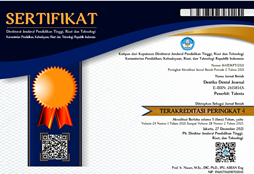Management of Traumatized Tooth with Cantilever Bridge
DOI:
https://doi.org/10.32734/dentika.v27i2.15773Keywords:
Traumatized Tooth, Tooth Fracture, Cantilever Bridge, Lithium DisilicateAbstract
Dental trauma may lead to tooth loss despite various efforts to retain and maintain the compromised tooth. Several studies have shown that the upper anterior teeth are more likely to suffer from trauma. In addition, their loss can lead to significant aesthetic and functional problems that are difficult to manage. A 22-year- old patient came to RSGM Universitas Sumatera Utara with chief complaint of fractured tooth that impaired appearance. Clinical and radiographic examination showed complicated crown and root fracture on anterior maxillary teeth (Andreason classification). Diagnosis of the fractured tooth revealed the presence of necrotic pulp with asymptomatic apical periodontitis. Treatment plan for tooth 11 was endodontic treatment, while tooth 21 was extracted due to poor prognosis. Subsequently, aesthetic rehabilitation was restored with the use of cantilever bridge. Management of tooth 11 was carried with endodontic treatment using a rotary file under rubber dam isolation, followed by retraction with dental floss. Cantilever bridge was then used as final restoration to optimize the aesthetic result. In addition, 1 month follow up showed good outcome in the patient. Increased patient demand for optimal aesthetics had led to the widespread use of alternatives to restore aesthetic following post- traumatic endodontic treatment, such as cantilever bridge. Lithium disilicate was an indirect restoration material that could be bonded using the latest universal adhesive system and had excellent aesthetic for use in the repair of aesthetic disorders. Root canal treatment and cantilever bridge could serve as treatment options to manage anterior tooth fracture and anterior tooth loss caused by dental trauma.
Downloads

Downloads
Published
How to Cite
Issue
Section
License
Copyright (c) 2024 Dentika: Dental Journal

This work is licensed under a Creative Commons Attribution-ShareAlike 4.0 International License.

















